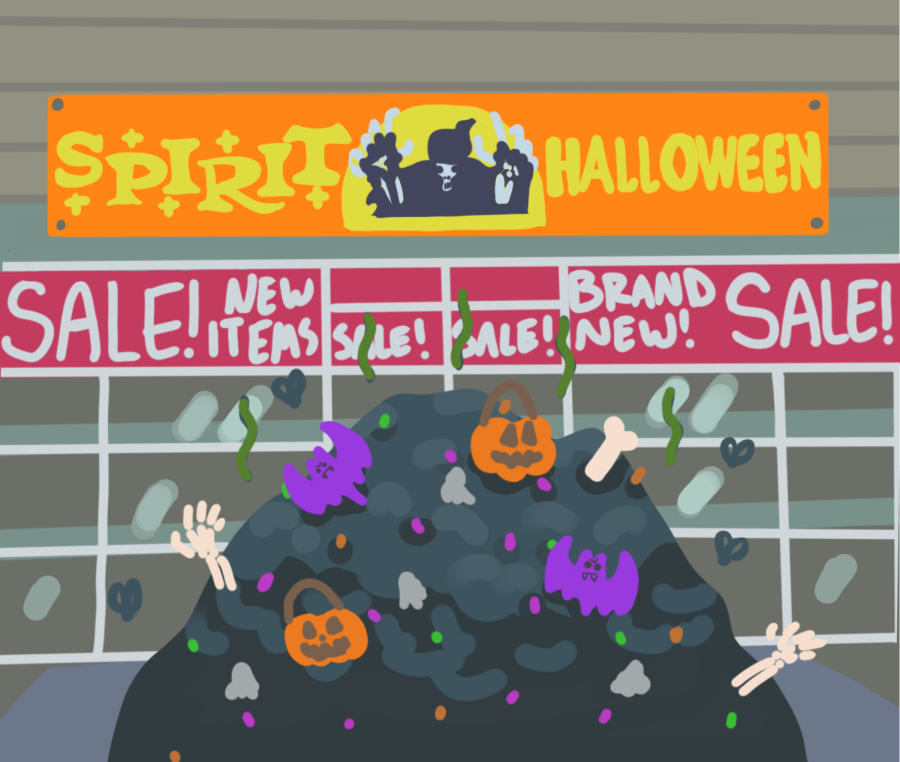Illustration by Eleni Pappas.
Act sustainably this Halloween
October 28, 2021
It’s no secret that Halloween is a capitalist holiday, but that doesn’t mean it has to be so unsustainable.
The sugar-filled, spooky holiday serves no religious or nationalistic function, yet research predicts consumers will spend up to a total of $10.14 billion this year, according to National Retail Federation’s September 2021 analysis.
Halloween is an undeniably special day for kids and a fun occasion for adults to party.
However, when so much money is spent on new materials for Halloween each year, it becomes a detriment to sustainable living and supports capitalistic spending.
The National Retail Federation’s breakdown of Halloween spending over past years suggests this year, consumers will spend a total of $3.32 billion dollars on costumes and $3.17 billion on decorations.
Consumers are predicted to spend $3 billion dollars on candy, according to the National Retail Federation.
As long as the wrappers are properly disposed of this practice isn’t overly detrimental to the environment.
The same cannot be said about new costumes and Halloween decorations.
Even though both costumes and decorations are reusable, people opt to buy new costumes, decorations and party supplies.
Materials found in Halloween costumes are 82.5% plastic, according to environmental charity Hubbub UK’s 2019 research.
“An estimated 7 million Halloween costumes are thrown away every year, contributing to 2,000 tonnes of plastic waste,” Hubbub UK stated.
This creates more plastic and synthetic fibers for just one night that aren’t reused.
The culture behind the spending is ridiculous as well, as corporations advertise and re-market their products with a Halloween theme in order to capitalize on the holiday.
While a similar trend in spending and advertising exists with Christmas, the spending is gift-oriented and less focused on disposable items.
The constant need to “top” last year’s holiday when it comes to Halloween encourages people to spend and waste more.
People should save decorations and costumes from the previous years to reuse them or loan them out.
It’s also easy to create Halloween costumes and even decorations, out of thrifted clothes, or things around the house.
A classic example of a homemade Halloween costume is a used sheet and cutting two holes in it where eyes should be. For decorations, candles do the trick.
The consumerist mindset during Halloween needs to be dropped.
Otherwise this one day a year will forever have a big eco-footprint and further contribute to our global environmental crisis.
Talk about a scary holiday.
